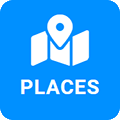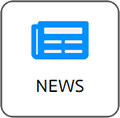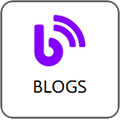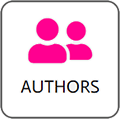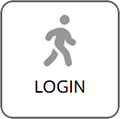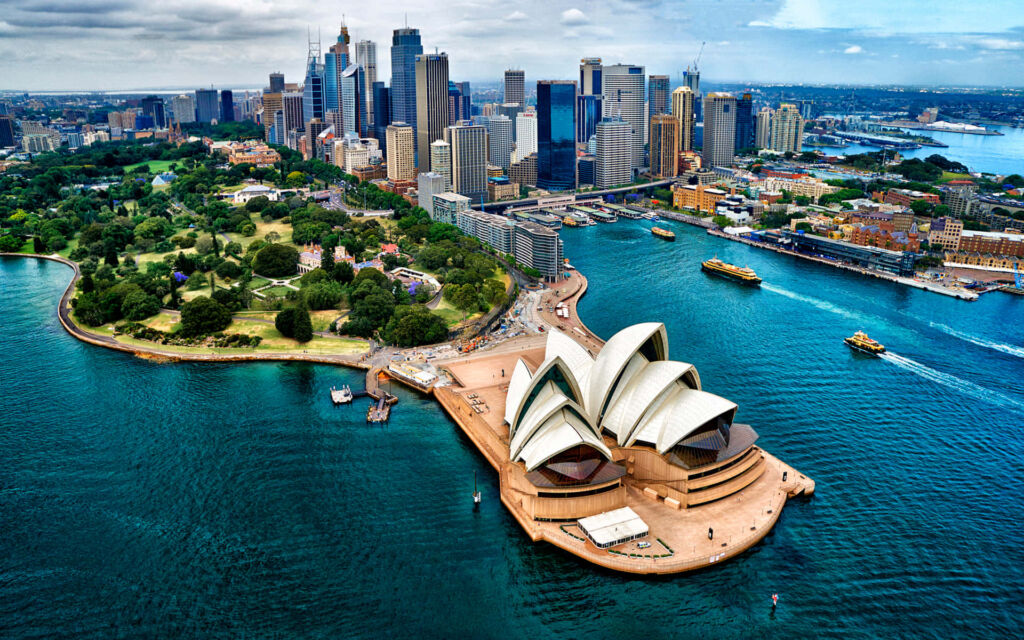Sydney is the capital of New South Wales and Australia’s largest city, spread over12368km2 around its famed natural harbour. The name derives from Lord Sydney, British Home Secretary when the First Fleet arrived in1788. Sydney hosts about5400000 people, making it the most populous city in Oceania. English is the official language; over40 languages are spoken, reflecting its multicultural population. Alcohol sales are regulated—beer and wine from18 and spirits from21 in licensed venues; recreational drugs remain illegal. Gambling is permitted in licensed casinos and wagering outlets. The head of state is the British monarch represented by a Governor-General at the federal level and a Governor at the state level; executive power rests with the Prime Minister federally and the Premier in New South Wales. Defence and national security are provided by the Australian Defence Force with active military installations in the greater Sydney region.
History
Sydney’s history stretches back at least30000 years when the Gadigal clan of the Eora Nation inhabited the coastal sandstone coves, sustaining themselves on fish, shellfish and native plants. Their social structures, law systems and complex seasonal cycles were finely tuned to the harbour’s rhythms. In1770 Captain James Cook charted the east coast and named Botany Bay for its abundant plant life. In1788 Governor Arthur Phillip led the First Fleet to Botany Bay but soon relocated to Sydney Cove on the northern shore for better anchorage and fresh water. He founded the penal colony that became the seed of modern Australia. Under Phillip’s cautious leadership convicts built makeshift huts, cleared land and planted crops, laying the foundations of a new settlement.
The colony struggled with food shortages and harsh conditions until settlers applied European agriculture to local soils. Over subsequent decades Sydney expanded as free settlers arrived, displacing Indigenous populations through disease, land seizures and violent conflicts. The frontier wars and smallpox epidemics decimated Aboriginal communities, with devastating cultural loss and dispossession that continue to affect Indigenous Australians today.
In1804 the Castle Hill Rebellion by Irish convicts was suppressed, affirming colonial authority. The chain-gang era persisted until convict transportation ended in1840. By1851 the discovery of gold in New South Wales and Victoria drew tens of thousands, transforming Sydney into a booming port city. Wealth from the gold rush fueled the construction of grand civic buildings—Customs House, the Mint, Victoria Barracks—and the expansion of suburbs. The Anglican St Andrew’s Cathedral and St Mary’s Cathedral symbolized growing religious diversity, as Catholic Irish immigrants established their own parishes.
Sydney led early movements toward self-government. In1856 responsible government in New South Wales granted elected legislatures powers over local affairs. The colony built railways linking Sydney to Parramatta and beyond by1855, spurring the growth of towns and industries. The iconic Harbour Bridge opened in1932 after eight years of construction by Dorman Long & Co, connecting northern and southern suburbs and symbolizing modern progress.
During World War I and II Sydney was a strategic naval and air base; the city endured Japanese midget submarine attacks in1942 but avoided large-scale invasion. Postwar immigration programs welcomed displaced Europeans and displaced persons from Greece, Italy, Eastern Europe and Asia, shaping Sydney’s multicultural character. The construction of the Sydney Opera House, designed by Danish architect Jørn Utzon, began in1959 and opened in1973, redefining waterfront architecture and propelling Sydney to global recognition.
Sydney hosted the 2000 Summer Olympics, showcasing world-class sporting venues—Stadium Australia, Olympic Park—and catalysing urban renewal in Homebush Bay. The event’s legacy includes improved transport networks and the revitalization of Parramatta. In the 21st century Sydney faces challenges of housing affordability, infrastructure demands and climate risks like rising sea levels and bushfire smoke. Yet its history of adaptation continues as the city balances heritage conservation, Indigenous reconciliation and sustainable development to shape its future.
Industry
Sydney’s economy is a major financial centre, home to the Australian Securities Exchange, major banks such as ANZ and Westpac and numerous multinational headquarters. The city is the birthplace of brands like Qantas Airways and ResMed medical devices. Light manufacturing includes food processing, fashion labels and technology startups in sectors such as fintech and biotech. Sydney Airport is the nation’s busiest, setting records for passenger throughput exceeding45million annually pre-pandemic. The Port of Sydney handles millions of tonnes of containerised cargo per year.
Flora and Fauna
Sydney’s bushland comprises eucalypt forests, sandstone heath and wet sclerophyll. Iconic endemic plants include the Sydney waratah (Telopea speciosissima) and scribbly gum (Eucalyptus haemastoma). The Blue Mountains, a nearby UNESCO World Heritage site, hosts several endangered flora and fauna. Wildlife includes brushtail possums, grey-headed flying foxes and echidnas. Marine species such as weedy seadragon and grey nurse sharks are protected. Dangerous animals include eastern brown snakes, funnel-web spiders and box jellyfish offshore. Domestic pets like dogs and cats are common; export requires quarantine. Endangered species like the glossy black-cockatoo rely on habitat conservation programs.
Religion and Ethnicities
Census data shows46 percent of residents identifying as Christian (Anglican, Catholic, Uniting Church), 4 percent Buddhist, 2 percent Muslim, 1 percent Hindu and 46 percent unaffiliated or other faiths. Ethnically, the population is 60 percent Anglo-Celtic, 10 percent Chinese, 5 percent Indian, 5 percent Lebanese and a mix of Europeans and South-East Asians. Religious traditions such as carol services and Ramadan breaking dinners coexist with secular celebrations.
Wars and Conflicts
Sydney’s war history includes the 1804 Irish rebellion, WWI troop departures from the harbour and WWII attacks by Japanese midget submarines in May1942. The city contributed forces to Korea, Vietnam and Afghanistan conflicts. The Anzac Memorial in Hyde Park and numerous cenotaphs commemorate fallen soldiers. Terrorist threats remain low, though police maintain vigilance against potential extremist attacks, aided by CCTV across transit hubs.
Standard of Living
Sydney ranks in the global top ten for quality of life, with a high GDP per capita near USD70000. It consistently appears in Mercer and Economist Intelligence Unit liveability indices. Corruption levels are low, with Australia ranking 11th in Transparency International’s CPI. Public services like free primary education and Medicare universal healthcare provide strong social safety nets.
Medicine
Sydney’s health system is world-class, combining public hospitals such as Royal Prince Alfred and private facilities like St Vincent’s. Pharmacies (chemists) are open Monday–Saturday 09:00–18:00 and Sundays in major shopping centres. Tourists must have travel insurance; emergency call is 000. Vaccinations recommended include hepatitis A, tetanus and influenza. Tap water is safe.
Sport
Cricket at the Sydney Cricket Ground and rugby at Allianz Stadium draw major crowds. The city hosted the 2000 Olympics, producing iconic venues still in use. Surf lifesaving and surfing are popular at Bondi. Football (soccer), netball and basketball have professional leagues. Triathlons and marathons are held annually. Olympians such as Cathy Freeman and Ian Thorpe hail from Sydney.
Holidays
Australia Day 26 January marks federation, celebrated with fireworks over Harbour. Anzac Day 25 April involves dawn services at Martin Place. Queen’s Birthday in June features public ceremonies. Labour Day varies by state; in NSW it falls in October. Christmas season from December to January includes Carols by Candlelight in the Domain.
Traditions
Barbecues and beach outings are casual weekend staples. Respect indigenous sites and Aboriginal land rights; “Welcome to Country” ceremonies at official events honor Eora elders. Punctuality is valued in business. Tipping is not obligatory but rounding up fares or leaving5–10percent in restaurants is appreciated.
Interesting Facts
Sydney Opera House appears on UNESCO’s World Heritage list. The Harbour Bridge opened in1932 under engineer Dr John Bradfield. The first feature film made in Australia, The Story of the Kelly Gang, premiered in1906. Actors Nicole Kidman and Hugh Jackman were born in Sydney. The city survived the “Black Christmas” bushfires in2001 with limited suburban damage. Blue Mountains steam train route from1908 is one of the world’s oldest mountain railways.
Money
The currency is the Australian dollar (AUD). Credit cards are accepted everywhere; ATMs are ubiquitous. Currency exchange is best at banks and dedicated bureaux in the CBD. Smaller shops prefer cash. Tipping of10percent in high-end restaurants and rounding up incremental amounts on taxi fares is courteous.
Household Details
Electricity is230V at50Hz; plugs type I. Mobile networks by Telstra Optus and Vodafone provide 4G/5G nationwide. Free Wi-Fi is common in libraries, cafés and public squares. Tap water is potable.
Clothing
Dress is casual-smart. Shorts, skirts and open-toed sandals are common in summer; evenings may require light layers. In places of worship cover shoulders and knees. Beachwear is limited to beach and pool areas; in cafés and shops cover up.
Tourism
A comprehensive Sydney visit requires5–7days. Allocate2–3days for central harbour attractions—Opera House, Harbour Bridge climb, ferry to Manly. Spend1day exploring Bondi to Coogee coastal walk and beaches. Dedicate1day to Blue Mountains for scenic hikes, Scenic World rides and Jenolan Caves. Reserve1day for Taronga Zoo and Darling Harbour precinct. Time for inner-city neighbourhoods—Surry Hills, Newtown and The Rocks—adds culinary and cultural depth.
Types of Tourism
Cultural and architectural tourism. Marine and coastal tourism at beaches and harbor cruises. Adventure tourism with bridge climbs and coastal hikes. Wildlife tourism at zoo and aquarium. Culinary tourism in diverse multicultural dining precincts. Event tourism for Sydney Festival and Vivid Light Festival.
List of Tourist Attractions
Sydney Opera House – UNESCO World Heritage site and iconic performing arts venue
Sydney Harbour Bridge – landmark arch bridge with pedestrian and bridge climb experiences
Royal Botanic Garden – historic botanical garden with views across harbor
Taronga Zoo – wildlife park with native and exotic species and sky safari cable car
Bondi Beach – famous surf beach and coastal trail to Coogee
List of Non-Tourist Attractions
Wendy’s Secret Garden – hidden cliffside garden in Lavender Bay
Cockatoo Island – convict-era island with heritage tours and camping
Susannah Place Museum – preserved 19th-century terrace houses in The Rocks
Fish Markets – early morning seafood auctions and dining on Blackwattle Bay
Camden Historic Village – colonial farming heritage west of the city
Local Cuisine
Barramundi – local fish pan-fried with lemon myrtle
Meat pies – savory pastry filled with minced meat and gravy
Pavlova – meringue-based dessert topped with fresh fruit and whipped cream
Lamingtons – sponge cake squares coated in chocolate and coconut
Tim Tams – chocolate biscuit treat for afternoon tea
Australian wines, craft beers and flat white coffee are signature beverages. Breakfast7–10AM, lunch12–2PM, dinner6–9PM. Street-food stalls in markets and food trucks maintain high hygiene. Tipping of10percent in full-service venues is customary.
Why Visit
Sydney blends world-renowned architecture, natural harbour beauty, golden beaches and vibrant multicultural neighbourhoods. Its year-round mild climate, safe environment and efficient infrastructure make it a top global destination.
Safety for Tourists
Sydney is one of the world’s safest cities. Violent crime is rare; petty theft can occur in crowded precincts. No dangerous wildlife in urban areas though occasional jellyfish stranding events at beaches. Lifeguards patrol major beaches; swim between flags. Heatwaves can pose health risks; stay hydrated. CCTV and frequent police patrols cover central areas. Australians welcome visitors of all nationalities.
Tourist Infrastructure
Hotels range from luxury five-star to budget hostels. Restaurants and cafés offer global cuisines. English is the primary language. Visitor information centers and official apps provide multilingual support.
Entry Rules
Most visitors require an electronic visa (eVisitor or ETA) before arrival. Passport must be valid for at least six months. Customs prohibit fresh produce, firearms, narcotics and more than10000AUD in cash without declaration.
Transport
Sydney’s public transport network includes trains, buses, ferries and light rail. An Opal card enables seamless payment across modes with daily caps. Tickets can be purchased online, at stations and kiosks. Ferries connect the CBD, Manly, Taronga Zoo and Parramatta.
Car
International driving permits are recognized. Driving is on the left. No toll roads in the CBD but several orbital motorways and harbor tunnels are tolled by e-tag. Blood-alcohol limit is0.05percent. Speed limits are50km/h in urban areas and100km/h on freeways. Speed cameras and mobile detectors enforce compliance. Parking meters regulate street parking with maximum two-hour limits in many zones. SUVs and compact cars recommended for occasional suburban trips. Fines start at AUD182 for speeding.
Noise Regulations
Residential noise restrictions apply from22:00 to07:00. Construction noise is permitted only during designated hours. Quiet zones around hospitals and schools prohibit loud music at all times.
Daily Budget
Budget travel costs100–150AUD (70–105USD) per day for hostels, local food and public transport. Midrange costs250–350AUD (175–245USD) per day for three-star hotels, restaurant meals and attractions. Luxury travel exceeds500AUD (350USD) daily.
What Is Not Recommended or Forbidden
Do not jaywalk; fines apply. Smoking is banned in enclosed public spaces and some outdoor areas. Drones require CASA approval and must not operate near airports or over crowds. Avoid feeding wildlife in national parks.
Climate
Sydney has a humid subtropical climate with warm summers (December to February) averaging22–26°C and mild winters (June to August) averaging8–17°C. Rainfall is fairly even year-round but peaks in autumn. Best time to visit is October to April for outdoor activities and events.
Travel Tips
Ensure routine immunisations. Use sunscreen and a hat to guard against strong UV. Carry a refillable water bottle. Book Opera House and BridgeClimb tickets in advance. Respect Indigenous lands and seek local guides for cultural tours. Download official transport apps for real-time updates. Enjoy Sydney’s blend of urban sophistication and natural splendour!
- Minsk (Belarus)
- Normandy
- Gibraltar
- Traveling to Russia
- The World of Varans
- Archaeological expedition of the Hermitage discovered a unique artifact of the Stone Age at excavations in the Serteyskaya Valley
- Weekend in Moab: Arches, Canyons, and the Spirit of Adventure
- Island
- Ecuador
- Great Plains (USA)
- Chukchi
- Belgium
- North Coast 500: a grand loop of Scotland’s Northern Highlands
- Finland
- Borneo
- Kostroma (Russia)
- Zulfiqar: The Legendary Sword and a Tourist Symbol of the Islamic World
- Indonesia
- About
- Nicaragua

